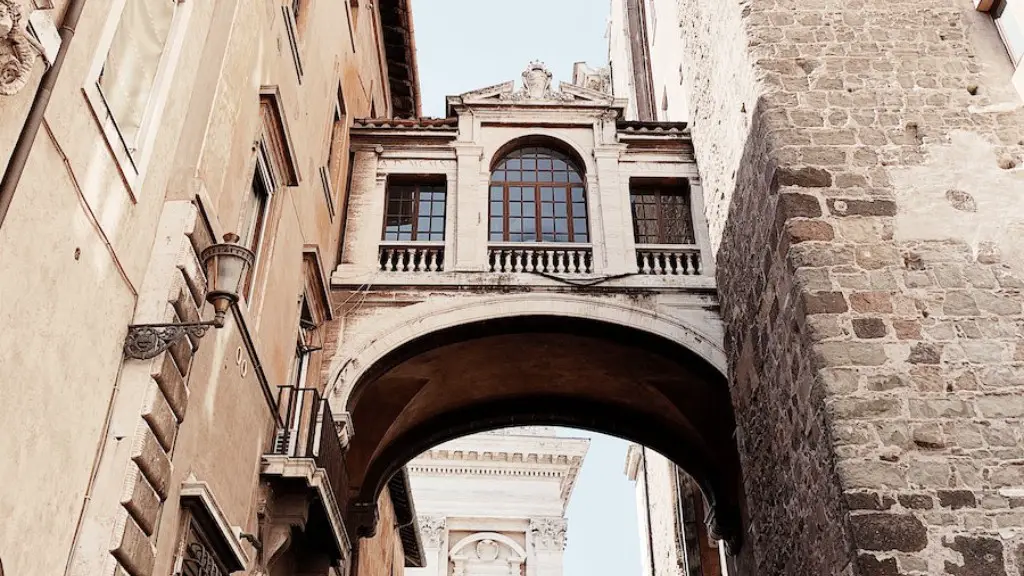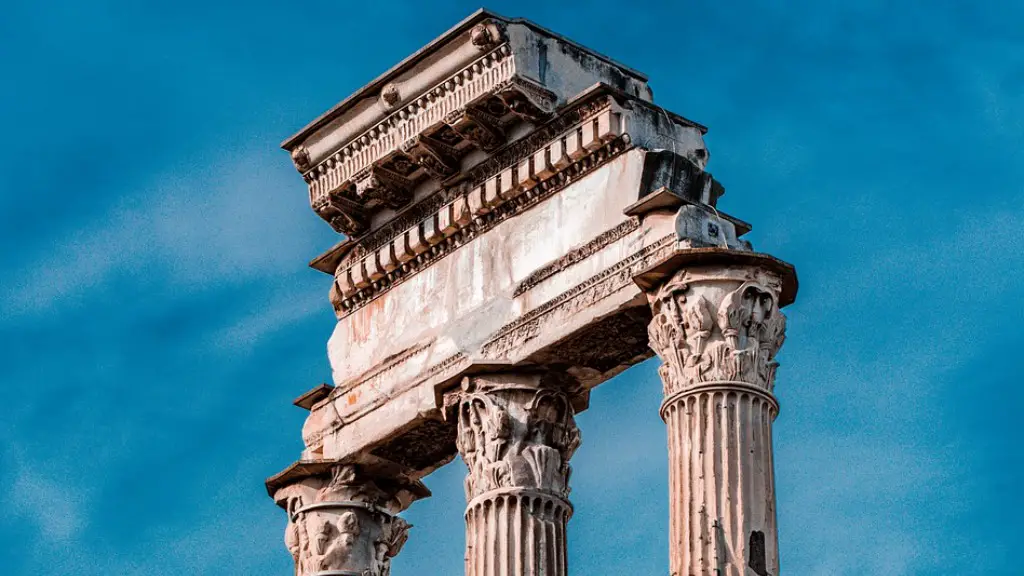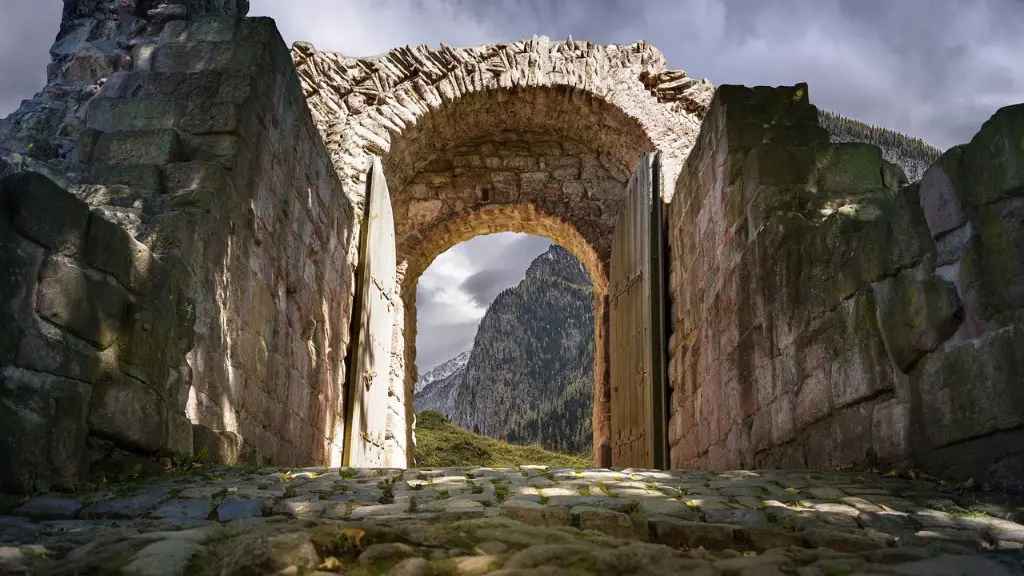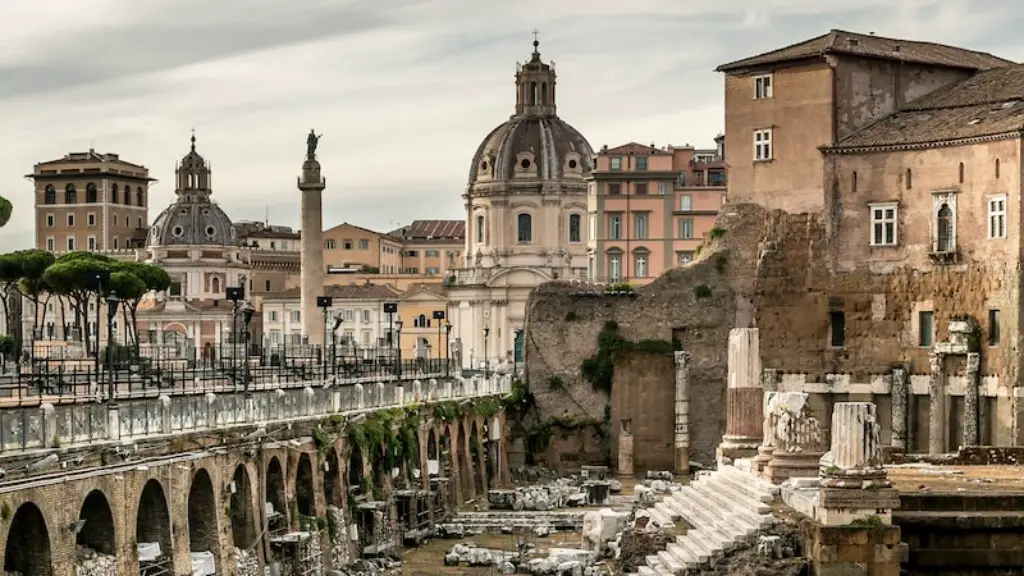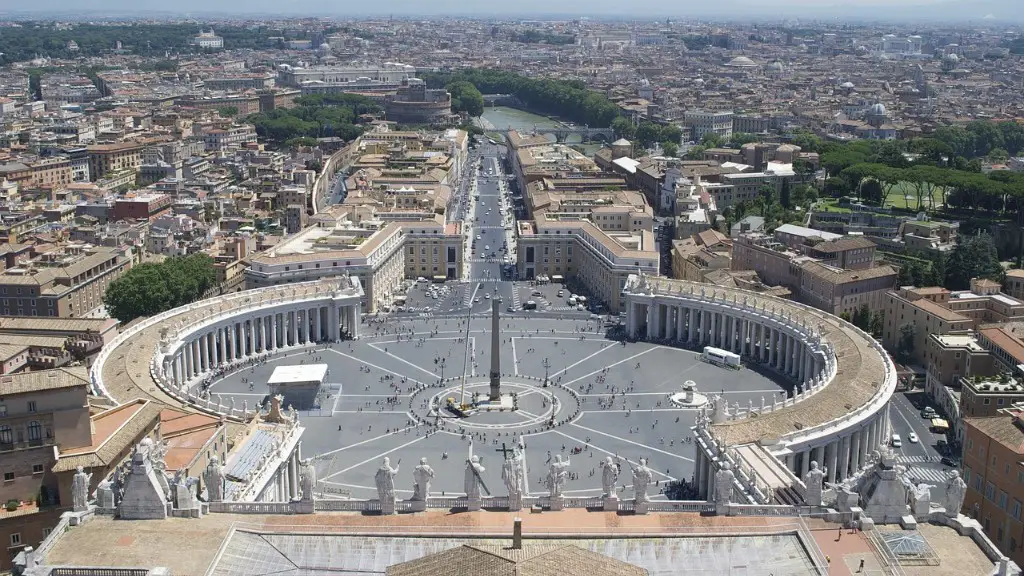The lower class has existed since ancient times, and Rome is no exception. In the days of the Roman Empire, the lower class were mostly slaves and the poor who had to work hard and often risk their lives to make a living. This class constituted the vast majority of the population and it was very difficult for them to climb the social ladder and improve their quality of life.
Slaves in Rome were mainly acquired through war, conquest and purchase. Slavery was seen as an institution and accepted as normal among the elites. Slaves were viewed as “property” and had no legal or political rights in the society. Roman slaves were owned by both the state and private individuals, who had the power to sell or trade them. Slaves were also used for manual labor to build roads and aqueducts, as well as act as personal servants.
The poor in Rome could be either freeborn citizens or non-citizens, such as freed slaves and immigrants. They were mostly laborers, farmers and merchants which were the bottom of the Roman social hierarchy. These people were considered to be the lowest class in the society and had very few rights or opportunities for social mobility.
The Roman elites were, of course, the ones that had all the power and wealth. They were the politicians, the military leaders, the intellectuals and the upper-class citizens. They held all the decisions on the economy, politics, art and literature and they determined the social structure in Rome.
It is important to note that Roman society was divided by wealth, not by gender or race. Men and women in the lower classes were all seen as equals, with the same opportunities and hardships, and were allowed to hold positions of power depending on their merits, unlike many other civilizations at the time.
The lives of the lower classes in ancient Rome were hard and filled with hardships. They were often treated like second-class citizens and their voices were rarely heard or respected. As we look back on this period in history, it is important to remember the hardships that the lower classes had to endure and the strength and resilience they showed in the face of adversity.
Opportunities for the lower classes
Although it may have seemed like the lower classes had no hope of social mobility and escape poverty in ancient Rome, there actually were a few opportunities available to them. Wealthy patrons could offer opportunities to talented or hard-working individuals and Rome also had a system of patronage which allowed wealthy upper classes to help those in need. This patronage could be in the form of financial assistance and could even extend to military rank and political positions.
Additionally, the lower classes could also pursue and work in fields like entertainment, trade and artisanal work, if they had the necessary skills. This allowed them to make a living and, if they were successful and lucky, even improve their social rank.
As can be assumed, the opportunity was not equal for everyone and depended on one’s education, family, social position and contacts. For example, a wealthy person’s son may have the right education and contacts to enter the political arena, while the lower classes had to fight hard to make a living. This inequality caused a great deal of discontent among the lower class, leading to civil unrest, revolt and even revolution throughout Rome’s history.
Plight of Slaves
Slaves were perhaps the most unfortunate members of the Roman population – they had no rights or autonomy and were viewed with disdain at best, and cruelty at worst. Most of them were taken into slavery through war or conquest, and had no chance to escape the fate imposed upon them. They were stripped of their rights and freedom and treated like property, to be sold and traded for any purpose.
The laws of Rome provided little protection from abuse and allowed masters to do whatever they wanted with their slaves, which could include physical punishment, exploitation and even sexual abuse. However, there were some laws which protected slaves from extreme violence, but even these could be ignored or overruled.
Slaves were also used for manual labor to build roads, aqueducts and temples for their masters, often in treacherous and dangerous conditions. They had to work hard and long hours without rest or proper food, with the knowledge that punishment or death could be waiting.
Despite their difficult circumstance, some slaves were able to gain the respect and trust of their masters, which could lead to better treatment or even working their way up the social ladder. This was an incredibly challenging task, however, as it was difficult to be seen as anything other than a slave in the eyes of their masters.
Political Impact of Lower Class Rome
The lower classes in Rome played an important role in the political landscape of the city. They were the ones who were most often the victims of political corruption, public spending and military campaigns, and their discontent could quickly turn into civil unrest and revolt. This was especially true during the Republic, when Rome’s elites were in a state of constant political maneuvering, leading to policies that often harmed the lower classes.
The plebis, the lower classes of Rome, were also the ones who revolted against their oppressors and demanded more rights and freedoms. They participated in revolts, revolutions and even civil wars, which led to changes in Rome’s political landscape and provided opportunities to the lower classes that they would have never had before.
The most famous example of such a revolt was the slave revolt led by Spartacus in 73 BC, which terrified the Roman elites and showed them the power of the lower classes. This revolt was eventually crushed, and Spartacus was killed by the Romans, but it allowed the lower classes to send a powerful message to the elites: they could no longer take the lower classes for granted.
Social Mobility and Culture
Although the opportunities for social mobility may have seemed slim to the lower classes of ancient Rome, there were some who were able to improve their position in the society. This was usually due to talent, connections, hard work or luck, and these individuals were able to escape poverty, work in prestigious positions, become educated and even politically powerful.
The lower classes also played an important role in the cultural life of Rome. They often created art, literature and music which celebrated their plight and story while providing entertainment and pleasure to the masses. They also developed their own culture, traditions and values and created a vibrant culture in the city of Rome.
Although the lower classes were in a vulnerable and precarious position in ancient Rome, they were able to persevere and even thrive in some cases. They proved to be resilient and strong, despite the odds, and even had a major impact on the culture, politics and society of Rome.
Legacy of Lower Classes in Rome
The legacy of the lower classes in Rome is still relevant today, as the system of social stratification still exists in many countries. Their story of struggle and resilience is a reminder of the importance of fighting for basic rights and freedoms, and of standing up against injustice and unfair treatment.
The lower classes in ancient Rome were able to fight for their rights and, although they faced numerous hardships, they also had moments of victory and triumph. Their struggles are an inspiration and a reminder that times may be difficult, but the power to make change lies in the people and the struggle should never stop.
Changes to the Lower Class in Rome
The condition of the lower classes in Rome changed throughout its history, as the empire went through different political, social and cultural changes. During Julius Caesar’s reign, for example, laws were passed that provided more rights and protections for the lower classes, allowing them more opportunities for upward social mobility.
The Roman Social War of the 80s BC, which was led by the lower classes and the Italian allies of Rome, also had a great impact on their rights and opportunities. This war led to a new constitution, which provided more political rights and autonomy for the lower classes, and allowed them more freedom and opportunity.
The fall of Rome in the 5th century also changed the social landscape of the city as the lower classes lost their rights and became slaves once again. The upheaval made it even more difficult for them to ascend the social ladder and they were largely forgotten or ignored by the ruling elites.
Although the condition of the lower classes in Rome changed throughout its history, what remained constant was their resilience and willingness to fight for their rights. They were able to make progress in their fight for freedom and equality, even if the results were not always what they hoped for.
Final Word on Lower Classes in Rome
The lower classes of ancient Rome were an integral part of the social and political landscape of the city. They faced numerous hardships and often had to struggle to survive and make a living, but they also managed to make some progress in their fight for freedom and basic rights.
The legacy of these lower classes is still relevant today and serves as a powerful reminder that those who fight for basic rights and freedom may not always win, but they will never stop trying. They fought for change even when the odds were stacked against them, and for this we can be inspired by their courage and resilience.
